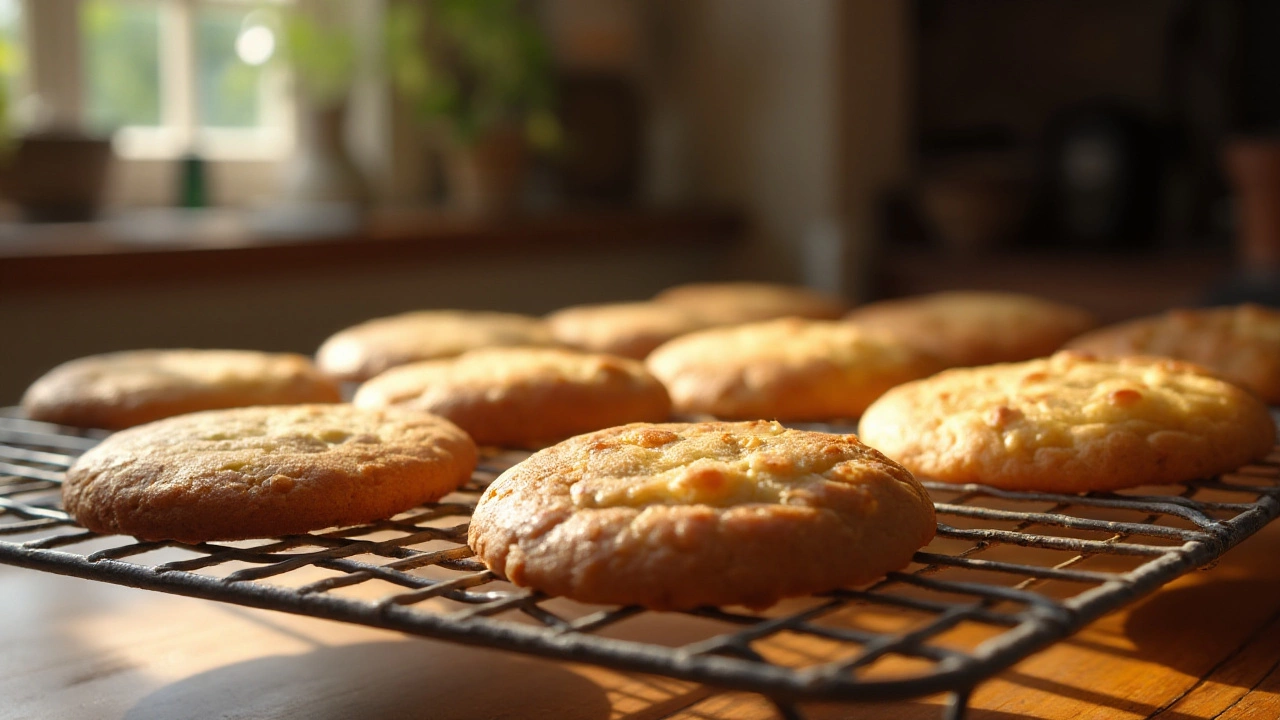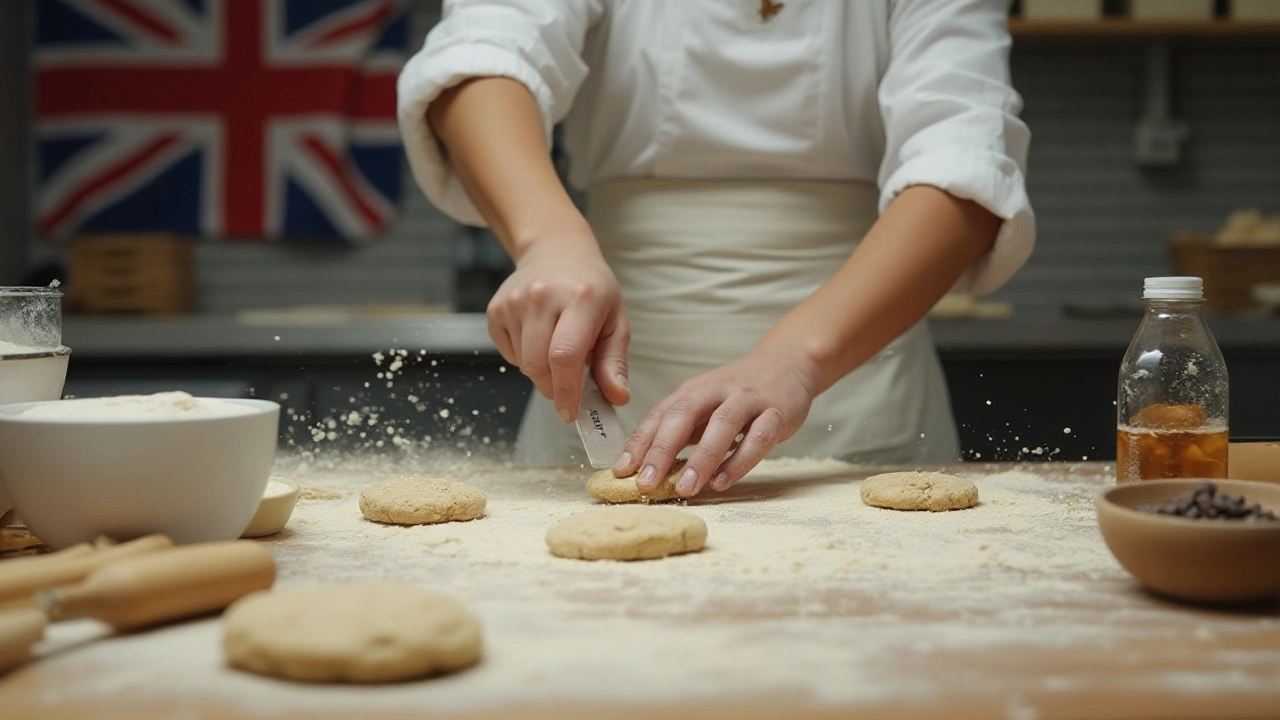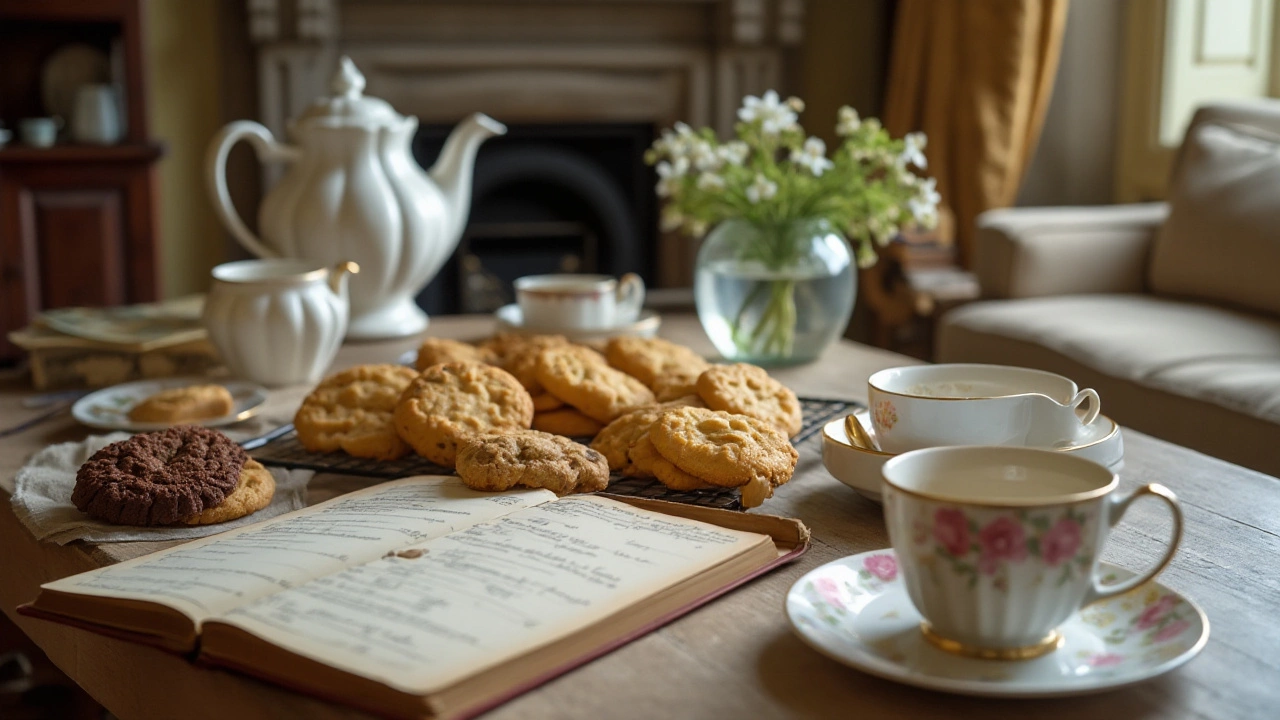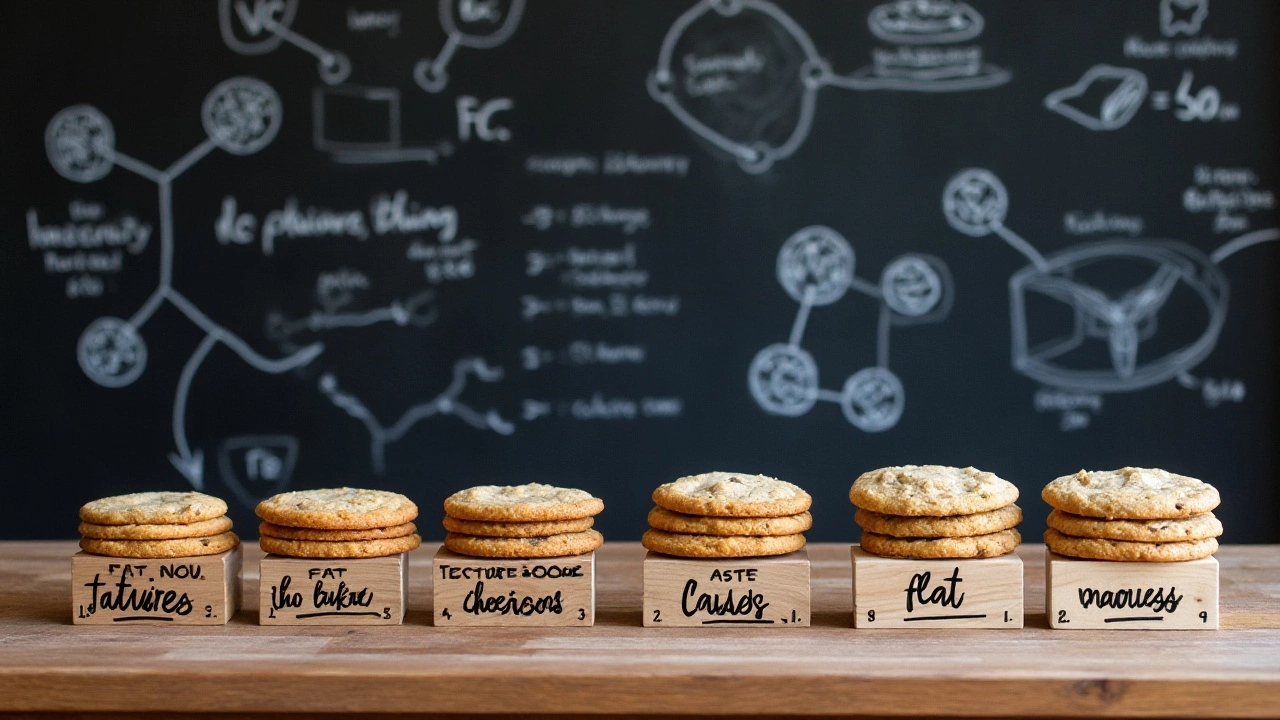
Ah, cookies! That delightful smell wafting through the kitchen is sure to bring smiles and salivating mouths. But as any home baker knows, there's always that crucial question before popping the pan in the oven: should you flatten your cookies? This longstanding debate in the baking world can be the difference between a perfectly soft center and a crispy edge. Here, we dive into the reasons behind flattening, shedding light on when it can make or break your beloved baked goods.
Every cookie recipe holds its own sweet tale. The chemistry within each mix creates textures ranging from chewy to crumbly. Flattening before baking plays a pivotal role in shaping those textures. The decision isn't merely about aesthetics; it affects how heat spreads through your dough. Join me as we explore which cookies rejoice in a gentle press and how it can enhance their flavor and appearance. Grab your apron, and let's get baking!
- The Science Behind Cookie Shapes
- When to Flatten Your Cookies
- Techniques for Perfect Cookie Flattening
- Tips for Cookie Baking Success
The Science Behind Cookie Shapes
Baking cookies is no ordinary kitchen feat; it's a blend of science and art that transforms a handful of ingredients into beloved cookies. One of the most critical aspects of this transformation is understanding how and why cookies spread in the oven. Every baker's quest for the impeccable cookie often starts with mastering the spread. The spread, or how flat a cookie becomes, is largely dictated by the interplay between heat, moisture, and dough structure.
Temperature plays a big role in how your cookies flatten out during baking. The heat causes the fat in the dough, often butter, to melt, which subsequently allows the dough to slacken and spread. A hotter oven might set the edges too quickly, preventing excessive spread, while a cooler oven gives all the time in the world for cookies to expand. The consistency of the dough, like how cold it is before baking, can either slow down or speed up this process.
An interesting detail many overlook is the type of sugar used in your recipe. Brown sugar adds moisture due to its molasses content, often leading to softer, chewier cookies, while white sugar contributes to a slightly crispier texture. This blend of sugars impacts not only sweetness but also the spread. Ever noticed how cookies with more granulated sugar tend to flatten more? It's a fascinating aspect of cookie chemistry, contributing to the final product's baking traits.
Another factor affecting cookie spread is the ratio of baking soda or baking powder. These leveners interact with acidic elements in the dough to create carbon dioxide gas, causing the dough to rise and puff. Too much can deter your cookies from spreading out into that perfect disc shape. In the words of the renowned chef, Julia Child, "Cooking is never perfect. There's always [something] you can improve upon." Remembering such nuggets of wisdom keeps each batch an adventure and a lesson.
Finally, the choice of flour affects the dough's structural integrity. All-purpose flour, with its moderate protein content, usually allows for a balanced spread - not too flat, not too puffy. However, playing with different flours, like bread flour, can provide unique textures due to its higher gluten content. Embrace the experimentation! The beauty of creating homemade cookies is discovering your own perfect balance of ingredients.

When to Flatten Your Cookies
Knowing when to flatten cookies can elevate your baking from good to exceptional. In fact, understanding this small step can help unlock that cookie nirvana every baker dreams about. Why? Well, flattening your dough before baking can control the spread of your cookies as they bake. Some cookies naturally spread on their own thanks to the melting of fats like butter, which is why you might not always need to press them down. However, when dealing with a dough that’s slightly drier or denser, such as those used in peanut butter cookies or some ginger spice cookies, a little encouragement in the form of flattening is called for. This slight intervention helps achieve that all-famous crispy edge and chewy center by ensuring even baking.
Have you ever tried chocolate chip cookies and wondered why they turned out like mounds rather than the flat rounds we all recognize? That’s often due to ingredients and temperatures at play. Chilling dough is a common step to reduce spreading, but too cold a dough won’t spread at all, resulting in thicker cookies. The solution can be as simple as a gentle flattening before baking. Flattening also emphasizes the chocolate chips within, which makes them more visually appealing. Adding this step is beneficial for cookies where a wide, flat shape is desired, like with oatmeal or sugar cookies where you want a satisfying bite with consistent texture throughout.
Sometimes, recipes specifically direct bakers to press down dough balls. You might see instructions to use a fork crossed over the dough for traditional peanut butter cookies. But you don’t have to stop there. Use a spatula or even the bottom of a glass! Pressing with a fork adds a classic texture, but other tools offer unique and appealing effects too. These manual presses ensure your homemade cookies are aesthetically pleasing and helps avoid undercooked centers. It’s a technique welcomed by many bakers, though sometimes debated. As baking expert Choco Wright once said,
"Pressing dough is akin to a handshake; just firm enough to leave an impression without squashing the life out of it."
There is science at work here, believe it or not, beyond traditional recipes and advice your grandma might share. The flattening impacts the surface-to-volume ratio of the cookie, affecting how they cook and, eventually, how they taste. More surface area allows for a faster Maillard reaction—a chemical reaction that makes cookies go golden brown and develops a deeper caramelized flavor. If texture and flavor are what you chase in your baked pursuits, knowing how and when to flatten is essential knowledge for your kitchen toolbox.
Consider this tiny step a delicate balancing act. Too little flattening could result in something more akin to mini-cakes than cookies, too much pressure, and you risk baking thin, over-crispy discs. Experimentation is key! Note how your dough reacts in different conditions—a humidity factor, a subtle ingredient swap, or a change in flour can all play roles. Sometimes even a recipe you’ve relied on for years might benefit from different treatment based on your current baking conditions. As you experiment, remember that baking cookies is as much an art as it is a science.

Techniques for Perfect Cookie Flattening
Baking cookies is an art form defined by not only ingredients but also by the techniques employed in shaping them. When it comes to cookie flattening, precision is key. Achieving a balance between a cookie that is too thick or spreading excessively is critical for that melt-in-your-mouth texture. One commonly recommended method is to use the palm of your hand to gently press down on the dough ball until it reaches about half of its original height. This method is ideal for cookies that you want to have a more even bake, with a uniform texture throughout. The technique ensures that the heat from the oven can reach into the center without overcooking the edges.
Different recipes require different degrees of flattening due to varying fat content and temperature; this plays a crucial role in how cookies spread. It's important to remember that cookie dough that contains a higher ratio of butter tends to spread more. This means minimal flattening is needed compared to dough with lesser butter or more flour, which retains its shape better in the oven. In these instances, manual flattening helps coax them into the desired shape and thickness. Depending on your recipe, incorporating a small amount of additional flour might help prevent excessive spread, delivering that perfect bite.
Many Ways to Flatten Your Cookies
Sometimes using tools can provide more uniform results. A flat-bottomed glass is a popular tool among home bakers, which offers more consistent pressure than hand pressing. Simply pressing the top of the dough ball with the glass gives you control over exact thickness you’re aiming for. To avoid sticking, a bit of granulated sugar on the bottom of the glass or a piece of parchment paper can work wonders. Not only will this technique ensure the cookies are evenly sized, but the sugar can also add a delightful crunch to your cookie's surface.Some bakers swear by specialized kitchen gadgets like cookie presses or stamper to ensure uniformity, especially when making large batches. While they might be an investment, they offer intricate designs as well as constant results. When using such gadgets, it's essential to ensure the dough's consistency is right for pressing—too soft, and the design may not stick; too stiff, and it might not imprint at all. Notably, this technique can also include a touch of artistry to your cookie presentation.
"The baking process for cookies is as much about the tactile, sensory experience as it is about the final product," says Rachel Saunders, a renowned culinary instructor. "Flattening your cookies allows you to engage with the dough more directly, giving it life and shape."
Getting It Right Every Time
Trial and error is often the best teacher in baking. To master the art of cookie flattening, it’s valuable to bake a couple of test cookies first to determine if your flattening technique needs adjustment before committing the entire batch. If your cookies turn out too flat, you might add a touch more flour to the dough or chill it longer before baking. On the contrary, if they’re too chunky, a bit more pressure when flattening or a slightly warmer dough could aid in achieving your ideal cookie shape. The key here is to remain patient and be prepared for a delicious exploration.As you dive into the cookie flattening process, always remember the main thing is to have fun. Baking is about creativity and expression, and each batch brings new opportunities to fine-tune your methods. The simple act of pressing down the dough can transform your homemade cookies into something truly spectacular. So go ahead, get your hands in the dough, and let the cookies speak to your artistic soul!

Tips for Cookie Baking Success
Baking cookies may seem like a straightforward process, but fine-tuning your approach can transform your homemade creations from ordinary to excellent. Focus on the balance of your ingredients, as this is the foundation of all great baking. Always begin by measuring your ingredients accurately. The right balance of flour, sugars, and fats determines if your cookies are chewy, crispy, or delightfully soft. Using a kitchen scale guarantees precision, a method many professional bakers endorse over measuring cups. As baking is a science, even a slight deviation could throw off your desired texture and taste. Let’s not forget the importance of room temperature ingredients. When butter and eggs are at room temperature, they blend more uniformly, which can lead to a more cohesive dough.
Timing is crucial too, starting from the moment you cream your butter and sugar to how long your dough chills. Don’t skimp on refrigeration time; resting your dough can enhance flavor and control the spread of the cookies during baking. It's no coincidence that top cookie recipes often require a minimum chilling time of one to two hours. Yet, don’t let it sit for days, as this can dry out the dough. Watch your baking time closely. Just a minute can turn perfectly golden cookies into over-baked disappointments. A slight underbake with residual cooking at room temperature can result in a chewier center, often preferred by cookie lovers.
The oven itself is another essential to consider. Always preheat your oven, ensuring it’s at the proper temperature before you begin. Investing in an oven thermometer could be a game-changer, as many home ovens run hotter or cooler than anticipated. Position your baking tray in the center of the oven for even heat distribution. For multiple batches, it might be helpful to rotate the trays halfway through to prevent burning or uneven cooking. On the matter of trays, avoid dark cookware. Shiny aluminum trays are the best option as they reflect heat rather than absorb it, promoting even baking.
Let's delve into flavors and additions. Sticking with simple, high-quality ingredients can enhance your cookie experience. Fresh vanilla extract, aromatic spices, or artisanal chocolate chips can elevate a basic cookie into something extraordinary. Don't shy away from experimenting with textures either. Nuts, dried fruits, or even a sprinkle of sea salt on top can add a delightful twist to your typical batch. For those seeking a reliable recipe base, it might be worth testing out the tried and true method of the New York Times' chocolate chip cookies, famously requiring an overnight rest for ideal flavor development. As food critic and chef Nigella Lawson once said,
"No matter how full I am, I always save room for a cookie."It's clear that excellent cookies can win over any heart.